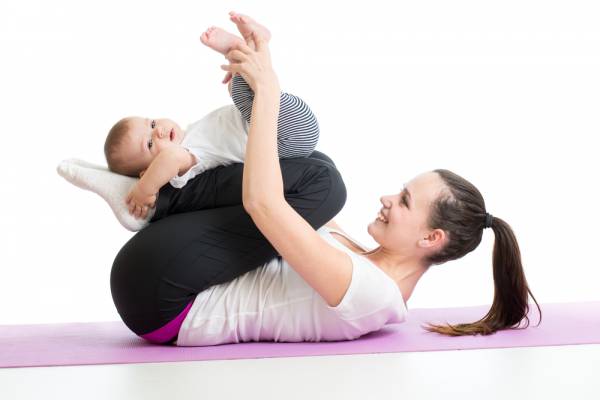Working in the pregnancy and birth field is not all rainbows and sunshine. As a birth worker, you also hear a lot of sad stories. Traumatic birth. Stillbirth. Recurrent miscarriage. Infertility. Women are often quick to open up about these issues, but they tend to be less open about one serious concern – antepartum and postpartum depression.
According to a 2012 research review, ten to fifteen percent of women experience postpartum depression in the first year after birth. These conditions have significant effects on maternal bonding and breastfeeding outcomes. And it doesn’t always wait until after pregnancy to strike. An estimated 14-23% of women struggle with depression during pregnancy, also known as antenatal depression.
A few weeks ago, a woman posted a story about her struggle with postpartum psychosis, a rare and serious condition, on a message board for a birth group I belong to. Her message detailed her struggle with psychosis that escalated into a suicide attempt and had been deleted from several other message boards because it was “too disturbing.” This common mentality that says we need to sweep these experiences under the rug has an unfortunate consequence: women who experience mental disorders related to pregnancy and delivery go silent far too frequently.
Studies also suggest many women are hesitant to take anti-depressant medications during and after pregnancy. Fortunately, there is mounting evidence to suggest that exercise can help prevent and remedy pregnancy-related mood disorders:
- A 2011 research review noted the need for more studies that investigate the benefits of exercise to treat antenatal depression. The researchers noted, “A small number of observational studies have reported that regular physical activities improve self-esteem and reduce symptoms of anxiety and depression during pregnancy.”
- A 2013 research review found a positive correlation between sedentary behavior and postpartum depressive symptoms. Women who had a sedentary lifestyle were more likely to experience postpartum depression than more active peers.
- From a study in the Journal of Midwifery and Women’s Health: “Given the reluctance by some women to use antidepressant medication postpartum and the limited availability of psychological therapies, exercise as a therapeutic possibility deserves further exploration.”
- A review of three studies concluded that “exercise was an effective treatment of postpartum depression, however only when women were exercising at a higher level of intensity.”

Although exercise during and after pregnancy can help prevent or alleviate postpartum and antenatal depression, it’s not a silver bullet. I recommend exercise as just one necessary element of a more holistic approach that includes the following five elements:
1. Support
Ask friends, family members, and people in your community for assistance. This was so hard for me to learn after my first child was born. I didn’t want to bug people or seem like I didn’t have a handle on the whole mom thing. But the truth is, people expect you to need help. Nobody out there thinks being a new parent is easy, and you’ll find people are happy to lend a hand. By the time number three came along, I was more than happy to let people cook, clean, and babysit for me.
If you’re struggling to keep up with a new baby and everything else in life, I recommend seeking the help of a postpartum doula. Although support from family and friends is priceless, sometimes women with postpartum mood disorders have an easier time receiving help from people who aren’t so close to them. For example, a 2013 study in the Journal of Obstetric, Gynecologic, and Neonatal Nursing found nurse visits were an effective preventive measure for women with postpartum depression. Another study found mothers with postpartum depression were less open to non-professional peer support.
2. Diet
Cultivate healthy postpartum eating habits to complement your exercise routine. Interestingly, one study found a high percentage of women with postpartum depression have struggled with eating disorders in the past. If you have a history of disordered eating, be vigilant and seek help if behaviors resurface after you baby is born.
3. Healing Time
If you recently delivered, take plenty of time off to bond with your baby and heal. Ease into exercise slowly and focus on using your workouts as opportunities to further the healing and recovery process. Listen to your body’s cues and let them guide you, rather than heeding pressures to be super mom.
4. Bonding
Exercise can be a great opportunity for bonding time. Unless you feel the need for a break, take your baby on walks, do yoga with him or her, and do simple bodyweight exercises while holding your baby. Babywearing can also help you build upper body strength while keeping baby close.

5. Quiet Time
Take time every day for peace and quiet. It could be a ten-minute meditation session, a short walk by yourself, a calming bath, or some reading time. It also helps to set aside some time in the morning and evening to assess how you feel and set an intention for your day.
Combining these five factors with a regular exercise program will go a long way in preventing postpartum mood disorders from developing or worsening. However, changing lifestyle factors isn’t always enough, so seek help if you continue to feel depressed. If you’re unsure of the symptoms of pregnancy and birth related mood disorders, this pamphlet has some helpful information, as does the book, This Isn’t What I Expected, by Karen R. Kleiman.
A final note: new fathers can also experience depressive symptoms after a baby’s birth. According to a 2010 study, “Prenatal and postpartum depression was evident in about ten percent of men in the reviewed studies and was relatively higher in the three- to six-month postpartum period. Paternal depression also showed a moderate positive correlation with maternal depression.” So dads, take care of yourselves, too.
Photos courtesy of Shutterstock.






